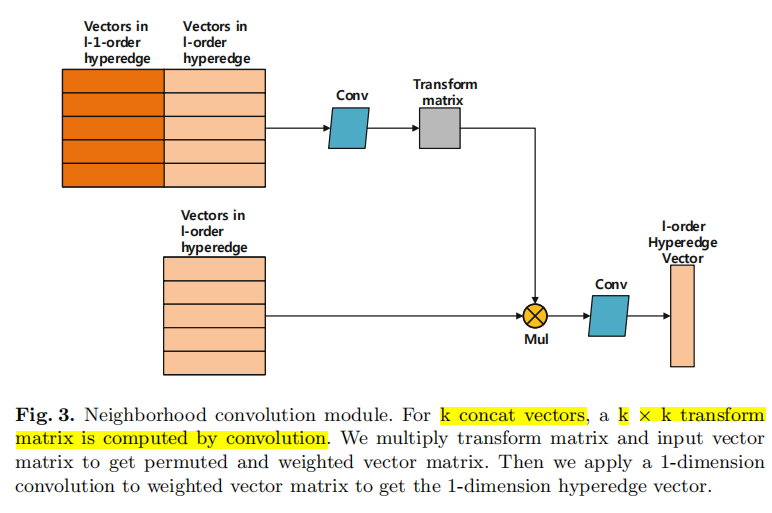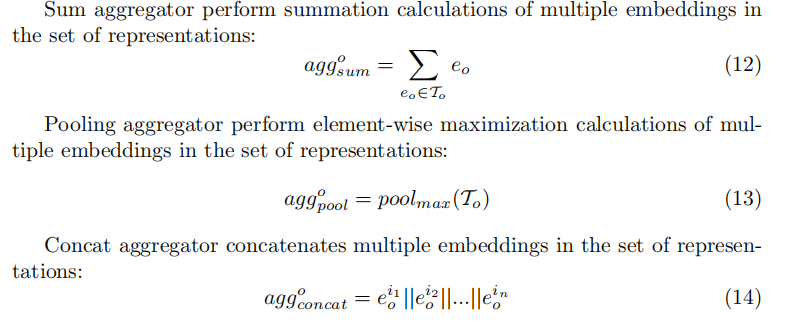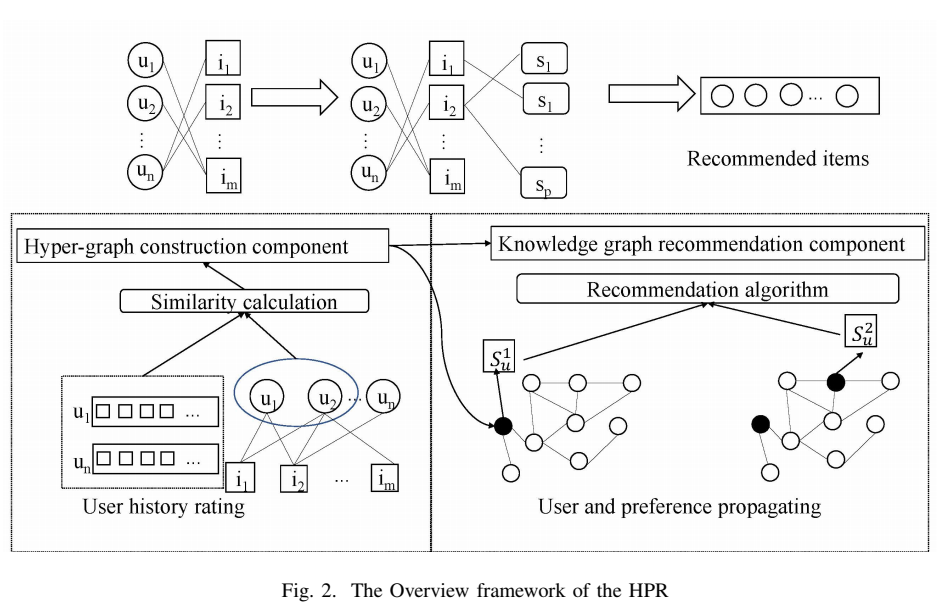Hyper Knowledge Graph
Hypergraph knowledge graph
KHNN
Paper: Knowledge-Aware Hypergraph Neural Network for Recommender Systems
总结:用CKAN方法表示user和item,用hyperedge将l-hop的node全部连在一起,用(l-1)hop和l-hop concate卷积计算出l-hop节点的权重与l-hop节点相乘,再做conv最后得到该层的一维embedding,然后再aggregation
Methodology

Knowledge-Aware Hypergraph Construction
Initial Hyperedge Construction
use user’s interacted items to represent user u

use items, which have been watched by the same user, to construct the initial item set of item v


Knowledge Hyperedge Construction
让l-hop neighbor 与(l-1)-hop neighbor在相连,即所有节点被一条hyper-edge相连,主要服务于下面的neighborhood convolution

Knowledge-Aware Hypergraph Convolution
Neighborhood Convolution

learn the transform matrix T from the entity vectors in both l-order and l-1-order hyperedges for vector permutation and weighting(entity vectors in l-order) . use 1-d conv to generate T , use another 1-d conv to aggregate the transformed vectors.

conv1 and conv2 are 1-dimension convolution but withdifffferent out channels.
for the initial hyper-edge

add item v information

combine

aggregation

LGCL
Paper:Line Graph Contrastive Learning for Link Prediction
Methodology

HPR
Paper: Empowering Knowledge Graph Construction with Hyper-graph for Personalized Recommendation
basic idea: You might like something that someone with similar preferences likes you.
总结:将相似度高的user作为hyper-edge(本质上是扩展了target user的1-hop neighbor),通过计算user的l-hop neighbor与target item的相似度来计算出user的embedding
Methodology
we would like to calculate the probability of \(u_1\) will interact with \(i\)

Hyper-graph learning
- adopt the cosine similarity to estimate the relevance between users.
- select some users with the highest similarity as the hyper-edge.
这里假设u1与u2最为相似,所以将u1、u2成为一条hypergraph
Knowledge Graph Construction
given:
\(\vec{i}\): the embedding of item i
\(S_{u_l}^1\) : the l-hop neighbor of user1, which takes the entities which with implicit interaction behaviour with users as head entities.
\(S_{u_2}^l\) : the l-hop neighbor of user2, because there is a hyperedge consist of u1 and u2
1-hop cal:
gain information between item-i and the 1-hop neighbor of user


\(N_u^1:S^1_{u_1} \or S^1_{u_2}\) user one-hop neighbor (include hyperedge)
multi-hop cal: get \(q_u^{l}\)
the user embedding:

predict:

HypE
Paper:Knowledge Hypergraphs: Extending Knowledge Graphs Beyond Binary Relations
score: convolution-based embedding method for knowledge hypergraph
总结:做KG图的连接预测,无GNN方法,主要是embedding计算方法。考虑到entity在triple中的i个位置,在这个位置有训练出来的filter,对embbeding进行转换,最后计算概率score,
计算成本较低。